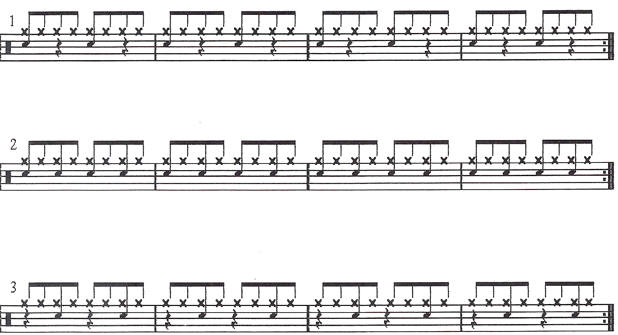Navigate to:

Navigate to: |
HOME | 
| BACK TO TUITION PAGE |
|---|
In "Getting Started" we got comfortable with "Quarter notes and Quarter rests". We discovered that quarter notes either play, or don't play in the case of a quarter note rest, on a pulse. Just two choices: Play if you see the note; don't play but count the time if you see the rest! Its easy!
Lets imagine buying a pizza that has been pre-cut into four equal slices. We take a slice and share it equally between two of us: we now have a slice that is half of a quarter - an eighth. So it follows that a note that lasts only half as long as a quarter note is an eighth note.
Because each eighth note has only half the value (duration) a quarter note we need to play twice as many of them to fill up our "four four" bar. To expand our "pulse count" to cater for these eighths, we will count the word "And" after each pulse number.
An eighth note looks the same as a quarter note (solid base and a stem) except that it has a "Tail". The tail can be anything from ornate and curly to a simple straight line, but it must touch the top of the stem. The eighth note rest looks a little like a number "7" but is really a dot connected to a backslash. The principle remains the same as before: Play when you see a note; leave a space the duration of a note when you see a rest.

Putting eighth notes and quarter notes together in a rhythm could look like this:


See if you can work through these three exercises that mix hihat and snare together:


Now that we can play eighth and quarter notes mixed together we're really getting somewhere. Try playing these next four rhythms that mix eighths and quarters but also add the bass drum. Use the audio below to confirm that you have worked them out correctly.

Once you are able to play all of the above four rhythms comfortably you are ready to tackle your first tune. In order to achieve this you first need to practice changing from one rhythm to the next without speeding up or slowing down (try playing along with the audio!). When you can do that you will need to practice playing each rhythm FOUR TIMES and then moving on to the next one.
Each rhythm is 1 bar in length. So if we play each of the four rhythms four times each we will have played a total of 16 bars. Below you can play the tune "First time (take 1)", which is a tune to go with the 16 bars of rhythm that you have been preparing. You will get four pulse clicks to count you in (1 bar) and then the music for the first rhythm will begin. Lets go!